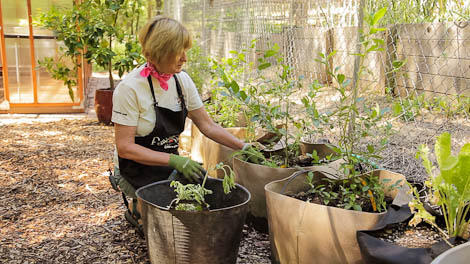Integrated Pest Management (IPM) In Your Garden
With Integrated Pest Management or IPM, pest control does not mean waiting until June and then grabbing the most toxic spray around to wipe out the summer pests in your garden.
You'd probably wipe out the honeybees, ladybugs, and all the other beneficial insects too. IPM is a system of pest control. Learn how you can use some easy preventive methods to keep diseases and pests at the lowest levels, with the least toxic methods. In our video, Tricia explains how Integrated Pest Management gives an organized way to plan pest control in your home garden.
Types of Organic Pest Control
Start thinking inside the four boxes of Integrated Pest Management. The four kinds of pest controls are:
Biological
Natural predators that will rid your garden of trouble-makers. What eats your pests? Have rodents? Cats are a natural predator. Have aphids? Ladybugs are a natural predator. Mosquitoes are killed by a bacteria abbreviated as Bt.
Cultural
Keep it clean, so there are fewer places for the bad guys to hide. For instance, orchard sanitation (the fancy term for picking up rotting fruit and dead leaves) deprives many pests of homes. Let them keep on moving, looking for another place to live.
Mechanical
Chemical
Here's where the sprays come in. Here's where Integrated Pest Management and organic gardening part ways. Both systems advocate using naturally derived pesticides when nothing else works. Integrated Pest Management takes it one step further and suggests conventional chemicals as a last step. See? So many more options for you, besides a can of spray.
Use the word PAMS when you work in your garden
Stay on the Integrated Pest Management track throughout the garden year when you remember the acronym PAMS. Prevention, Avoidance, Monitoring, Suppression.

Prevention
In spring and summer, plant disease resistant varieties, water them in the early morning during dry seasons, and keep the garden tidy all year long -- to prevent diseases and pest occupation. 
Avoidance
Got pests? Avoid damage by using barriers like bird netting over strawberry beds in summer. You can also avoid diseases by moving your plants in the spring and fall -- practice crop rotation with the nightshade family (tomatoes, potatoes, and eggplants), garlic and onions; don't replant them in the same spot for three years. 
Monitoring
You can't see everything in your garden with your naked eyes. Hang traps in early spring to discover what's out there, like Tricia does with codling moth traps in her fruit trees. Get a hand lens to magnify your view of pests or diseases on your leaves any time of the year. 
Suppression
Suppress those weeds by cultivating (hort talk for clawing up weeds) between your plants in spring and summer. If you do have flying pests, use baited lures and traps to suppress their population in early spring, and beat them to the punch.
Think of IPM and PAMS as you do your weekly garden chores -- and please think of Peaceful Valley for all your organic pest control needs!

